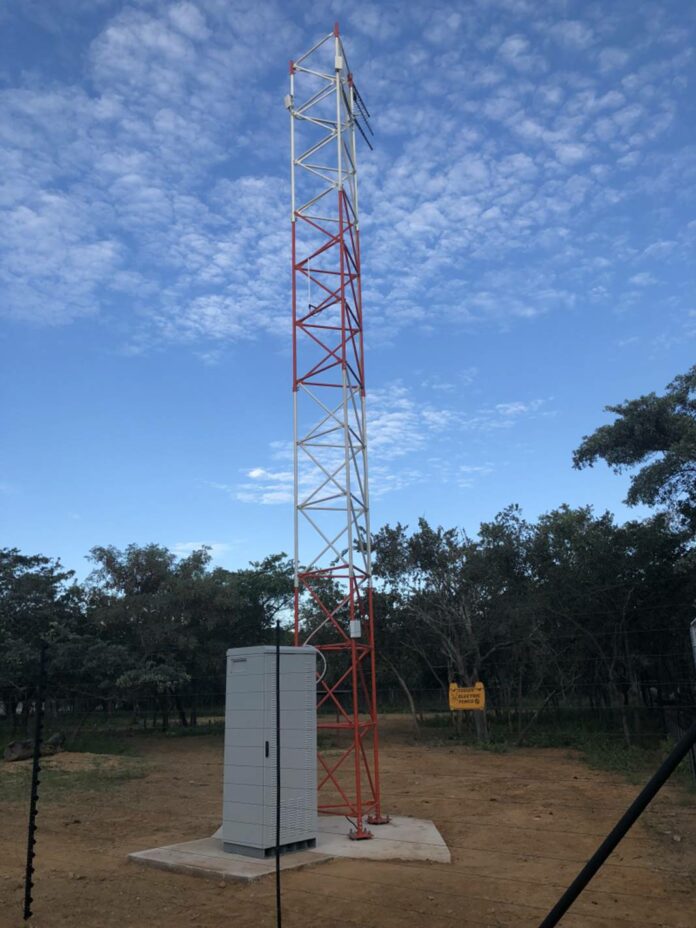Improve Network Cellphone Signal On Farms, Mines & Remote Locations
In the modern world, having a cell phone is essential for staying connected. We all rely on our phones for communication, whether it’s to be informed, productive, or entertained. However, what occurs when you find yourself in a distant location with poor cell coverage?
It might be difficult to stay connected when travelling in these kinds of places, especially if you depend on your phone for entertainment, communication, or navigation.
This might make it difficult for you to send texts, make phone calls, or even use the internet, which would make you feel alone and powerless. To maximise your cellular reception and maintain a connection no matter where you are, there are a few options.
There are various methods available, ranging from cell phone signal boosters to vehicle boosters.
You will find a few strategies in this article that will help you maximise mobile reception in rural regions. These pointers can help you keep on course whether you’re an intrepid traveller organising a camping trip, a business owner looking to improve teamwork in the field, or just someone who wants to stay connected while on the go.
1. Learn The Basics About Network Cellphone Signal
Understanding how cellular reception works is essential to ensuring optimal coverage in remote places. Cellular reception, to put it briefly, is the process by which your phone establishes a connection with a cell tower in order to send and receive data.
Numerous cell towers that transmit and receive signals to and from mobile devices make up cellular networks. Your phone connects to the network by communicating with the closest cell tower whenever you use data or make a call.
Cellular reception is primarily affected by two factors: signal intensity and signal quality. Decibels are used to express signal strength, which is the power level of the cellular signal that is received by your phone.
The reception is better with a stronger signal. On the other hand, signal quality deals with the cellular signal’s coherence and clarity.
Poor signal quality might result in your phone dropping calls or experiencing sluggish internet rates, even if your coverage is strong. Signal quality can be affected by noise, network congestion, and interference.
When it comes to cellular signal monitoring, signal strength and quality are important indications. The signal strength indicator on the majority of smartphones shows the dBm value in addition to the number of bars or dots.
Gaining an understanding of the fundamentals of cellular reception will enable you to determine the ideal location and placement for maximum reception.
Avoiding places with a lot of interference or network congestion is one option; another is to move closer to a cell tower to increase signal strength.
But in order to get over these obstacles, you must look at techniques to improve your signal.
2. Use A Signal Booster To Get The Best Possible Cellular Signal Coverage
You’ve probably been frustrated by lost calls, sluggish data speeds, and erratic connections if you reside somewhere with poor cellular service or travel to remote places regularly.
Thankfully, a signal booster is an answer. By absorbing weak signals and boosting them to produce stronger, more dependable connections, a signal booster, sometimes referred to as an amplifier, is a device that may dramatically increase cellular reception.
An indoor amplifier, an indoor antenna, and an outside antenna make up the device’s three primary parts.
Finding the spot outside your house or car with the best cellular signal, putting the outside antenna, connecting the indoor and outdoor antennas to the amplifier, and turning on the device are the simple steps involved in installing a signal booster.
When selecting a signal booster, it’s important to take into account aspects like the size of the area, the number of users, and the frequency of the cellular signal.
Different types of boosters are available to fit varied demands and budgets. Even in the most distant locations, you may have better cellular coverage by choosing a signal booster that is compatible with the frequency bands of both your phone and your network provider.
These are our best recommendations for farms, mines & remote locations:
The Best Selections For Extremely Weak Cell Signal
- Mostly used on farms, mines, hospitals & in big corporate offices
- Boost 2G, 3G, 4G LTE & Even 5G
- Works for all phones & networks. MTN, Vodacom, Telkom, Cell C, & Rain
- Complete kit, easy to install.
The Best Antenna For Receiving Signals From Distant Towers
Key Features
- Gain of 13/16 dBi
- Broadband (890~960/1920-2180 MHz)
- Easy to install & weatherproof
- Low VSWR and return loss, stable performance
- Rated Wind Resistance Velocity 210km/h
The Best Recommended Signal Booster for Your Vehicles Whether Cars, Bakkie, Boats, Ships & Yachts
Key Features & Benefits
- Boost All Networks 2G GSM Voice Calls, Sms & 3G Data, High-Speed Lte 4G & Even 5G
- Durable Industrial Design
- 3 Year Warranty
- 30 Day Money Back Guarantee
- Convertible – Can also be used in a small home or office
3. Select the Appropriate Network Provider
It might be difficult to get strong cellular service in rural locations, but selecting the correct network provider can have a significant impact. Signal strength and coverage can be affected by the cellular technologies and frequencies used by different networks.
It’s critical to examine coverage maps and ascertain whether the network operator you choose covers the regions you will be visiting in order to make the ideal decision about network provider.
But bear in mind that signal strength can be impacted by a variety of variables, including building materials and topography, and thus coverage maps are not always reliable.
You should think about the technology and frequency bands used by the network provider in addition to coverage. While some networks utilise GSM technology, others use CDMA technology.
In rural locations, lower frequencies usually offer greater coverage. Roaming agreements with other networks may be necessary if your network is unreliable in the places you visit regularly.
But roaming may be expensive, therefore it’s important to know the restrictions and costs associated with roaming from your network provider.
Finally, it’s critical to take into account the network’s support and customer care. If you have problems getting cellular service in outlying places, you need a network operator who has a quick-response support crew.
Seek out networks with fast response times and high ratings for customer care. Even in remote locations, you may greatly enhance your ability to stay connected by selecting the appropriate network provider.
4. Adjust Your Phone’s Preferences
Did you know that you may increase your phone’s capacity to receive strong signals by adjusting its settings? Turn off any unused services or programmes, such music or video streaming apps, that could be using up your phone’s cellular connection to begin with.
It is advisable to deactivate superfluous functions like as Bluetooth and GPS in order to preserve battery life and enhance the likelihood of receiving a robust cellular connection.
If your phone is only showing one bar, another technique is to turn off LTE as this high-speed cellular internet network might not be accessible everywhere and might drain a lot of battery life.
As an alternative, you may reset your signals and extend the life of your battery by turning on aeroplane mode.
Your phone will automatically reconnect to the cellular network if coverage is available when you turn off aeroplane mode, which might lead to a better signal in places with patchy or limited coverage.
Additionally, you may utilise Wi-Fi calling and texting as a helpful workaround in places with spotty or nonexistent cellular service by turning on Wi-Fi while in aeroplane mode to connect to Wi-Fi networks.
Keep in mind that adjusting your phone’s settings to their best potential helps strengthen the signal, but it’s crucial to test them beforehand and make any necessary modifications.



